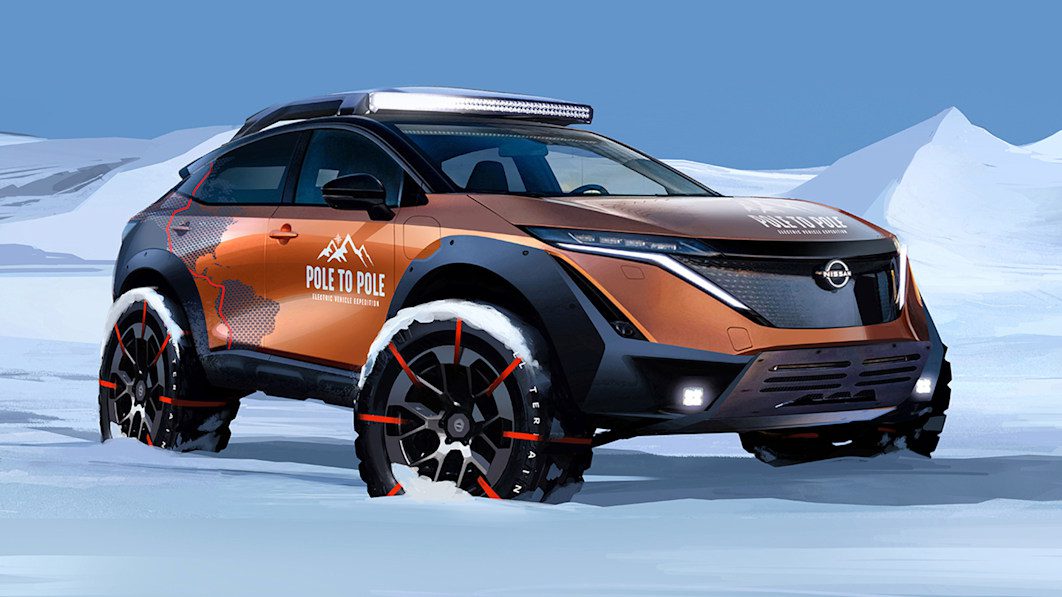Nissan building an Ariya for a North to South Pole expedition

Nissan and Chris Ramsey of Plug In Adventures are planning a pretty amazing trip for next year. Ramsey will be driving a 2023 Nissan Ariya from the North Pole to the South Pole. It will be the first time that not just an EV, but any kind of car has been driven from pole to pole. And Nissan has plans to make Ramsey’s Ariya rather badass.
The specifics are thin, but Nissan has said the electric crossover SUV will be getting wheel, tire and suspension upgrades. It will also be modifying the body to accommodate those changes. Based on the renderings, large fender flares will be the main change to the exterior, along with a roof rack and off-road lights. Also, the base vehicle will be an Ariya with e-4ORCE all-wheel drive. That’s the version with dual motors, 389 horsepower and an estimated range of 265 miles. An unmodified Ariya will also be on the route as a support vehicle.
Of course, that range will likely vary a fair bit considering the terrain and the temperatures Ramsey and the Ariya will be facing. The route will go from the North Pole through North and South America down to the South Pole. Although charging will be a challenge, Ramsey and his team should be up for it. He and his wife completed the Mongol Rally with a first-generation Nissan Leaf, which was an 8,000-mile trek through some similarly remote areas. Creative charging solutions included wiring the car directly up to a power pole in Siberia with the help of an electrician.
The trip is scheduled for March 2023. So we should see the finished Ariya within the year. We’ll be interested to see how the expedition goes and how long it takes. The Ramseys finished the Mongol Rally in 56 days. While the Ariya has more range, and sections of the trip will likely feature good roads and charging infrastructure, the pole-to-pole journey is much longer, at just under 16,800 miles.
Related video:



